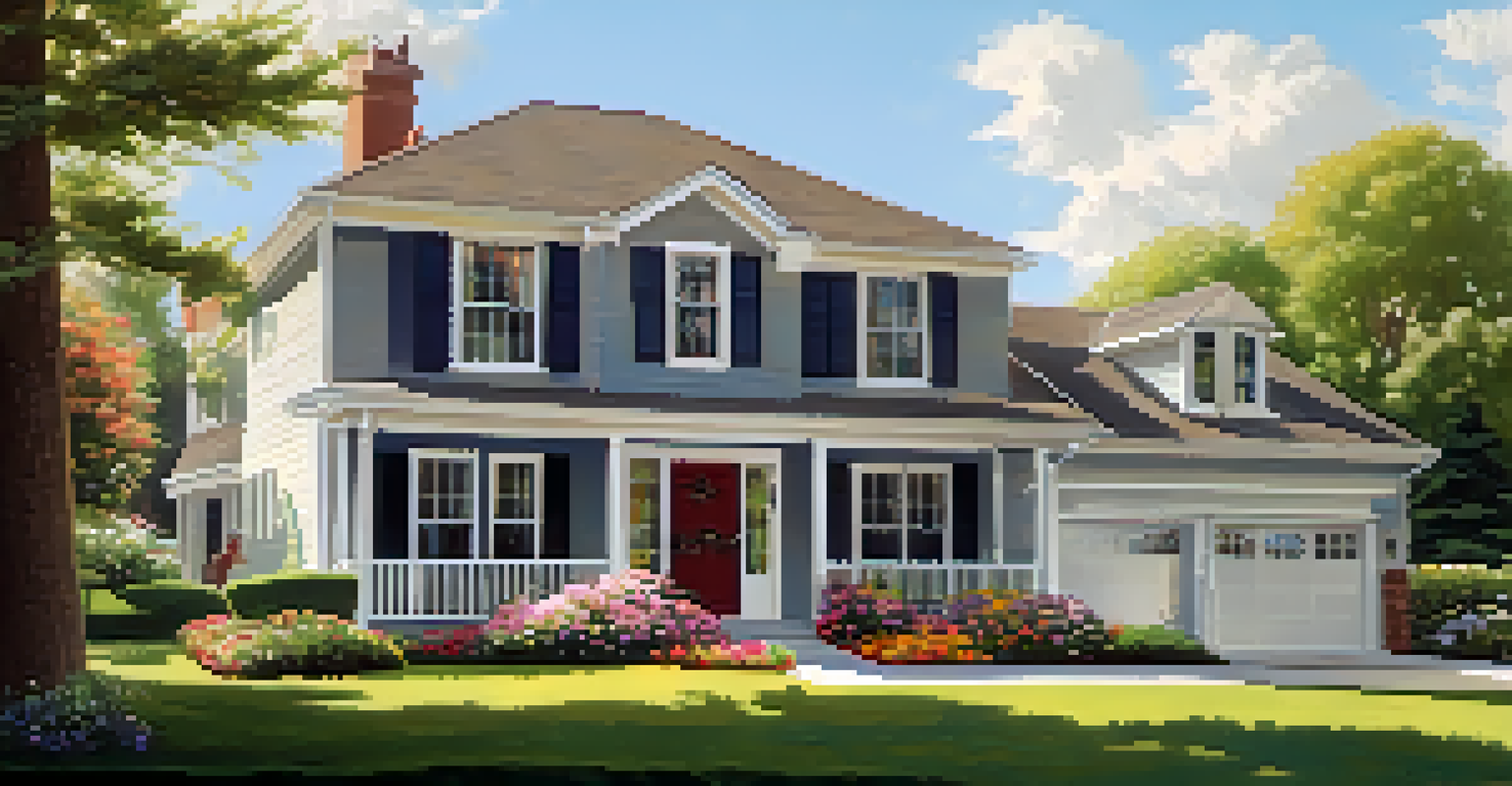Open House Duration: Finding the Right Length for Success

Understanding the Importance of Open House Length
Open house length plays a crucial role in attracting potential buyers. If it's too short, interested parties may not have enough time to explore the property, leading to missed opportunities. Conversely, a duration that's too long can lead to fatigue for both the sellers and visitors, possibly deterring future interest.
The best way to predict the future is to create it.
To maximize engagement, it's essential to find a sweet spot for the open house duration. This balance ensures that visitors feel welcomed and have ample time to ask questions and inspect the property. A well-timed open house can create a sense of urgency, encouraging buyers to act quickly.
Typical open house durations usually range from one to three hours. However, understanding your target audience and the property's unique features can help you tailor the timing for optimal impact.
Factors Influencing Open House Duration
Several factors can influence how long an open house should last. These include the size of the home, the number of visitors expected, and the time of day the event is scheduled. Larger properties may require more time for potential buyers to explore fully, while smaller homes may not need as long.

Another important factor is the local real estate market conditions. In a competitive market, shorter open houses might create a sense of urgency, while in a slower market, longer durations can allow for more thorough discussions and engagement.
Optimal Open House Duration
Finding the right length for an open house is crucial for maximizing visitor engagement and avoiding fatigue.
Additionally, consider the time of year and local events that could affect attendance. For instance, during holidays or busy weekends, it might be beneficial to extend the open house duration to accommodate more visitors.
Best Practices for Open House Scheduling
Choosing the right day and time for your open house can significantly impact attendance. Weekends are typically the best choice, as many potential buyers are off work and more available to visit. Aim for mid-afternoon, as this allows people to visit after running errands or attending other events.
You never get a second chance to make a first impression.
Promoting the open house in advance is also essential. Use social media, local listings, and word of mouth to spread the word. The more people know about your event, the more likely they are to attend, which means you may want to consider extending the duration to accommodate a larger crowd.
Lastly, ensure that you have enough time for preparation before the open house begins. This allows you to address any last-minute details, ensuring a smooth experience for both sellers and visitors.
Creating an Inviting Atmosphere
The atmosphere of your open house can greatly influence how long visitors stay. A warm, inviting environment encourages guests to linger and explore. Simple touches like soft lighting, pleasant scents, and comfortable seating can create a welcoming feel that makes people want to spend more time in the space.
Consider having refreshments available, as offering snacks and drinks can keep visitors comfortable and encourage them to stay longer. This is especially effective during longer open houses, as it gives visitors a reason to relax and engage more deeply with the property.
Factors Affecting Attendance
Elements like property size, market conditions, and local events significantly influence how long an open house should last.
Don’t forget to provide informative materials about the property. This can include brochures, property specs, and local area information. When visitors have access to this information, they are more likely to stay and ask questions.
Engaging Your Visitors During the Open House
Engagement is key during an open house, and your approach can influence how long potential buyers stay. Greet each visitor warmly and be ready to answer questions. A friendly demeanor can put people at ease and encourage them to explore the property further.
Consider leading small groups of visitors through the home to highlight its best features. This not only keeps them engaged but also allows for a more personal touch, making them feel special and valued. Tailoring your tour to their interests can foster deeper connections.
Encourage visitors to share their thoughts and feedback. Asking open-ended questions can lead to valuable conversations and insights that help you gauge their interest level, which can also extend their visit.
Evaluating Open House Success
After the open house, it's important to evaluate its success based on attendance and engagement. Collect feedback from visitors to understand what they liked and areas for improvement. This information can be invaluable for future open houses.
Consider tracking how long visitors stayed and how many expressed interest in the property. This can give you a clearer picture of whether the duration was effective. If most visitors rushed through, it might indicate the need for a longer duration next time.
Creating a Welcoming Environment
An inviting atmosphere with refreshments and informative materials can encourage visitors to stay longer and engage more deeply.
Lastly, follow up with attendees. Sending a thank-you message can keep the lines of communication open and might even lead to further interest in the property.
Adjusting for Future Open Houses
Every open house provides an opportunity to learn and adjust for the future. If you notice trends in attendance or feedback, use that information to refine your approach. For instance, if visitors consistently mention they want more time, consider extending the duration for your next event.
Also, take note of seasonal changes that might affect attendance. For example, summer months might see more families available on weekends, while winter may require more flexibility in scheduling. Adapting to these changes can help improve attendance and engagement.

Overall, being flexible and responsive to feedback will help you find the right open house duration for success. Tailoring each event to what you've learned will create a better experience for future buyers.